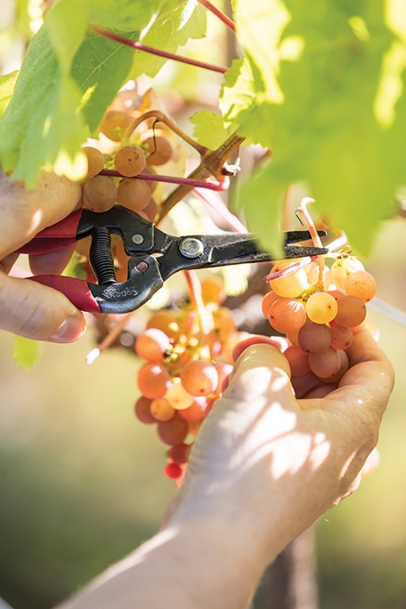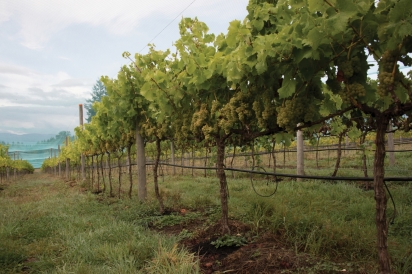Putting Cool on the Map
Vancouver Island is home to more than 30 licensed wineries and approximately 500 vineyard acres. It’s a wine region with a distinctly cool character, fuelled by a community of committed growers, gregarious makers and uniquely supportive consumers. The Island is one of British Columbia’s nine geographical indications (or GIs), an appellation of origin system that ties an agricultural product—in this case, wine—to a specific geography.
We’ve come a remarkably long way.
As recently as 1990, there were fewer than 1,000 vineyard acres in all of BC. Although a government-funded project to trial wine grapes on Vancouver Island had highlighted some viable varieties in the 1980s, the Island’s status as a bonafide wine region was very much in its infancy. Thirty years is not a long time; some vintages will age in bottle for longer than it has taken Vancouver Island to establish itself as a cool climate region capable of producing terroir-driven wines.
It’s All About Terroir
When considering wine, or indeed any agricultural product, terroir—from the French terre, meaning land—is a valuable concept. A narrow understanding of terroir will invariably include reference to the soil composition in a given wine region or vineyard. But a more holistic comprehension encompasses a multitude of factors that affect a wine’s phenotype: everything from climate (sunlight, temperature and precipitation) to topography (elevation, slope and aspect), as well as hydrology, and even the scale and type of human intervention in the vineyard and winery are considered.
Terroir then, might best be described as the in-bottle transubstantiation of place, time and method. (Sounds spiritual...and some would argue it is!) It is as much a philosophical concept as it is an agroecological one. As a wine concept, terroir underpins much of the progress that’s occurring within BC’s wine industry to define the province’s GIs. A recent application to the British Columbia Wine Authority seeks to establish the Cowichan Valley as a sub-GI; a region-within-a-region with its own inimitable terroir. Loamy soil; warm, sunny summers; mild, wet winters, and the temperature-mitigating effects of the Georgia Strait and surrounding lakes are just some of the factors that contribute to the Cowichan Valley’s unique terroir.
The Impact of Climate Change
Bailey Williamson, winemaker at Blue Grouse, led the charge for Cowichan’s sub-GI. A passionate advocate for Vancouver Island wineries, Williamson recently met with Randy Ullom, winemaker at California giant Kendall-Jackson Vineyard Estates, at a large gathering of international wine figures.
“Randy sought me out,” says Williamson. “He wanted to talk to me about Vancouver Island! For a big Californian winemaker to have us on his radar is no small thing.” The realities of climate change have led influential industry players elsewhere to ask: where are the new wine regions and what are they up to? As many long-established regions now face formidable challenges such as water scarcity and wildfires, newer (and cooler) vinicultural regions are presented with new opportunities.
But opportunities do not preclude challenges. John Volpe, associate professor in the School of Environmental Studies at the University of Victoria, heads a two-year research project that focuses on measuring and managing the parameters of Pinot Gris ripeness on the Island. By 2050–three decades away–Cowichan will have an estimated growing season of 303 days. Ripening will become more reliable; but on the whole, grape growing is likely to become more challenging.
Given these predictions, access to localized data and research may help growers respond better to climate variation in their vineyards. Volpe is eager to contribute to the field, subscribing to a concept of terroir that is both expansive and contextually specific: “[Wine is] the only widely consumed modern product whose value proposition is rooted entirely in place and time, rendering it the physical manifestation of the coevolution of a people and their environment”. More simply put: when it comes to terroir, there’s no place like home.
Opportunity in a Glass
But what does ‘home’ actually mean in the glass?
Our limited growing-degree days (the accumulation of heat over the growing season to ripen fruit) allow for the slow and steady development of grape sugars. As a result, acidity remains uncompromised. Reds are typically bright and fruit-forward with limited ageability. If you’re looking for a bold red with lots of tannins and a punchy alcohol percentage, best look elsewhere. Cooler climates like ours do not reliably reach the number of growing-degree days necessary to ripen ‘big reds.’
In much the same way you won’t find Malbec in the Mosel, or Syrah in Champagne; wine drinkers here must temper their expectations based on our coastal reality. On Vancouver Island, Pinot Noir is most everyone’s enfant préféré. Marechal Foch is another red grape that does well by our climate.
Whites and sparklings can be firecrackers; they are aromatic, focused and lively. Look for hybrids like Petite Milo and Epicure (aka Sauvignette), as well as dependable vinifera varieties like Pinot Gris, Ortega, Siegerrebe and Müller-Thurgau. As an added bonus, the zippy mouth-feel exemplified by many Island whites make them incredibly food-friendly.
There’s no denying our gastronomic fortune on Vancouver Island. But domestic support for sustainable development of the region and its wines is imperative. So, before you fire up the barbecue this summer, pay a visit to an Island winery, or keep it local at your nearest wine store. We may be spoiled for choice when it comes to the availability of international wines here in BC, but it’s entirely possible that your heart’s desire lies no further than your own backyard.







